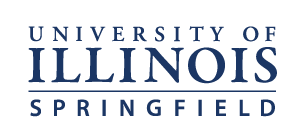College is an investment, and understanding the full cost of college is important. When researching the cost of different colleges, most do a simple Google search and accept the first number that appears as the cost. The real cost varies depending on several factors: location, program, financial aid and scholarships. Use our tuition calculator for an estimate, but keep in mind it won't include financial aid or scholarships you may receive.
FAFSA
Apply for Financial Aid by filling out your Free Application for Student Aid (FAFSA) which is an online form that determines students' eligibility for financial aid for college or graduate school, including grants, scholarships, work-study funds and loans. In order to fill out your FAFSA, you will need your Social Security number, tax returns, W-2 forms and the institutions’ code. UIS’s code is 009333. You will need to complete this form every year. Admitted students can view their Financial Aid Offer Notification through UIS Self-Service, under the Financial Aid tab.
Scholarships
UIS offers a variety of scholarships. There is no separate application for the Honors Program, Prairie Promise or merit scholarships. Students must apply individually for other scholarships. Start researching and applying early to meet deadlines!
Did you know:
If you had a 4.0 high school GPA, you can receive up to $7,000 off your tuition.
OR
You can receive up to 100% free tuition through the Prairie Promise, a financial aid program that covers remaining tuition and fees for eligible Illinois freshmen who receive the MAP grant with AIM HIGH, UIS merit and/or UIS need-based aid.
UIS also encourages students to do their own research for scholarships beyond the university. We’ve compiled a list of outside scholarships to help you get started. Start as early as your junior year in high school by talking to your high school counselor or contact your financial aid advisor at UIS.
Graduate students should look at Graduate Assistantships and Graduate Public Service Internships to help finance their education while gaining work experience.
Loans
Loans should be a last resort since you are borrowing money, and you will eventually have to pay it back. With interest accruing over time, you will be paying back more than you borrowed. Payment back on the loan typically starts six months after you graduate.
Turning Work Experience into College Credit
Everyone’s life experiences are different. Your work, military service, or other experiences may count as college credit. Contact the Office of Engaged Learning – Internships and Prior Learning staff to see if your prior experience can be converted into academic credit and save money by decreasing the number of classes you need to complete your degree.
Community College
While paying for tuition, fees, room and board for four years may not be possible for all, there is always the option of community college. Community colleges often allow you to live at home and provide you with comparable general education classes. To ensure a smooth transfer process, it’s crucial to stay organized, work closely with your advisor, and use tools like Transferology to verify that your credits will count toward your degree. If you transfer to UIS from an Illinois community college without completing all the requirements for your associate degree, it may be possible to complete the credits you need using UIS’ courses by reverse transferring your UIS credits to your community college.
To help take some of the risk out of transferring, UIS has Transfer Pathways with selected Illinois community colleges, guaranteeing certain credits will transfer seamlessly. Additionally, UIS offers a Transfer Admission Guarantee (TAG) for students with specific associate degrees from Illinois community colleges, allowing them to enter as juniors with general education requirements met. There is also a U of I System Transfer Guarantee for students who meet specific academic criteria, ensuring admission to the university, though not necessarily to a specific college or major. For more information, visit our transfer page.
By exploring all your options—FAFSA, scholarships, work-study programs, community college, and transfer pathways—you can significantly reduce the cost of attending college. Planning ahead and making use of available resources will help you finance your education more effectively.
Contact
- Office Location: UHB 1015 (University Hall Building).
- Email: finaid@uis.edu



